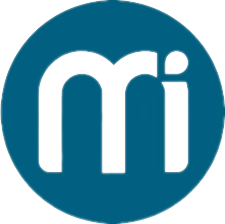Dream Home Financing: A Clear Path From Vision To Keys

Everyone deserves a home that fits a life plan and a budget. Dream home financing helps turn a vision into a property with a sustainable payment. With the right steps, a buyer can qualify confidently, compare options clearly, and close on time. This guide explains the process in simple terms while keeping the reader engaged from start to finish.
What Dream Home Financing Really Means
Dream home financing is the strategy and structure that fund a purchase or a build. It aligns income, credit, savings, and long-term goals with a mortgage product. It does not mean stretching beyond comfort. Instead, it balances affordability with features that support a stable future.
Is Dream Home Financing Legit?
Many shoppers ask, is dream home financing legit? Yes, when handled through licensed lenders and verified programs. A buyer should confirm a lender’s NMLS ID, read disclosures, and review consumer feedback. They can also search dream home mortgage reviews and check independent sources to confirm service quality and compliance.
How To Prepare For A Strong Approval
Preparation sets the tone for the entire journey. Simple steps can improve approval odds and pricing.
- Set a target payment before shopping. A dream house calculator helps define a safe price range based on income, debts, taxes, and insurance.
- Build savings. Down payment, closing costs, and reserves matter. Typical closing costs range from 2% to 5% of the price.
- Improve credit. Pay on time. Reduce revolving balances. Avoid opening new accounts before a dream home application.
- Document income. Gather W‑2s, pay stubs, tax returns, and asset statements. Self-employed borrowers organize profit and loss statements.
- Stabilize debt-to-income (DTI). Lenders prefer lower DTI. Paying off high-interest debt can boost approval strength.
A Simple Step-By-Step Process
The path from interest to ownership is clear and repeatable.
- Pre-Qualification: A quick estimate of affordability using stated income and debts.
- Pre-Approval: A verified review of credit, income, and assets. This step strengthens offers and sets realistic price limits.
- Home Search And Offer: A buyer shops with confidence after pre-approval. They write an offer aligned with loan terms.
- Appraisal And Underwriting: The lender validates the property value and the file. Underwriters resolve conditions and confirm eligibility.
- Clear To Close: Final numbers arrive in the Closing Disclosure at least three business days before signing.
- Funding And Keys: The loan funds. The dream home belongs to the buyer.

Loan Programs That Fit Real Lives
No single product suits every family. A dream home loan program should match credit, down payment, location, and service needs.
- Conventional Loans: Strong for borrowers with solid credit and at least 3% down. Mortgage insurance can drop later.
- FHA Loans: Flexible credit and low down payment options. Useful for first-time buyers or those rebuilding credit.
- VA Loans: For eligible service members and veterans. Often zero down and no mortgage insurance.
- USDA Loans: For eligible rural areas and incomes. Often zero down with geographic limits.
- Jumbo Loans: For higher-priced homes that exceed conforming limits. Strong credit and reserves usually required.
- Construction-To-Permanent Loans: Finance a build and convert to a mortgage after completion.
Choosing Rates, Terms, And Features
Rates and terms drive total cost and comfort.
- Fixed-Rate vs ARM: A fixed-rate mortgage offers payment stability. An adjustable-rate mortgage starts lower but can change later.
- Term Length: A 30-year term lowers payment. A 15- or 20-year term reduces total interest and builds equity faster.
- Points And Credits: Buying points can reduce the rate. Lender credits can offset closing costs. Compare break-even timelines.
- Mortgage Insurance: Conventional MI can be removed with equity. FHA MI lasts longer. Evaluate life-of-loan cost.
Real Costs Beyond The Down Payment
A smart plan includes every dollar.
- Prepaids: Property taxes, homeowners insurance, and daily interest at closing.
- Escrows: Monthly portions for taxes and insurance to avoid lump-sum bills.
- Inspections: General, pest, sewer, and other checks protect against surprise repairs.
- Appraisal And Title Fees: Required to verify value and secure ownership.
How To Compare Lenders With Confidence
Comparing providers is a key part of dream home financing. A shopper should request a standardized Loan Estimate on the same day, then compare APR, total costs, and lock terms. They should also assess service speed, communication style, and transparency. Reading dream home mortgage reviews and third‑party ratings can reveal patterns of service quality. Finally, verifying licensing and asking about underwriting turn times can prevent delays.
About Dream Home Mortgage
Since 1998, Dream Home Mortgage is recognized as a reliable, best-in-class services provider in the mortgage industry in the USA. The team provides comprehensive services covering all aspects of dream home financing from pre-approval to closing and beyond.

Digital Tools That Simplify Decisions
A dream house calculator gives instant clarity on price, payment, and taxes. It also shows how down payment, rate, and term affect affordability. When ready, a borrower completes a dream home application online in minutes, uploads documents securely, and tracks underwriting milestones. E‑signature and mobile document capture keep the file moving.
Common Mistakes And How To Avoid Them
- Skipping Pre-Approval: Sellers favor verified buyers. Pre-approval strengthens offers and prevents surprises.
- Draining Savings: Keep an emergency fund even after closing. Lenders often like to see reserves.
- Big Purchases Mid-Process: New debt can change approval. Delay car loans, furniture, or credit inquiries until after funding.
- Ignoring Total Cost: Payment is more than principal and interest. Taxes, insurance, HOA dues, and maintenance matter.
- Not Locking The Rate: Markets change. A clear lock strategy reduces risk.
Signals Of A Trustworthy Offer
A reliable offer explains the rate, APR, costs, lock length, and any prepayment penalties. It includes a clear list of documents and a realistic timeline. It offers written scenarios for a dream home loan with different down payments and terms. It also presents alternatives within the dream home loan program array, so a buyer can choose based on monthly payment, cash to close, and long-term interest.
Strategy For First-Time And Move-Up Buyers
First-time buyers benefit from education and down payment assistance where available. Move-up buyers plan for overlapping housing costs and timing. Both groups can benefit from lender-paid credits, seller concessions, or rate buydowns. A 2‑1 buydown can ease the first two years of payments during transitions or renovations.
Truths About Timing The Market
Rates and home prices shift. Yet the right time depends on life stage, budget, and stability, not headlines. A buyer can win with a fair price, a sustainable payment, and a clear refinancing plan if rates decline. Equity grows through amortization and market appreciation over time.
Due Diligence Checklist
- Confirm lender license and NMLS ID.
- Compare at least three written Loan Estimates on the same day.
- Ask about underwriting turn times, appraisal panels, and closing coverage.
- Review the Closing Disclosure carefully and early.
- Keep funds seasoned and traceable. Avoid cash deposits.
- Communicate job or income changes at once.

Creating Long-Term Value
Dream home financing should serve a life plan. It should protect savings, provide tax documentation, and support future goals like education or retirement. Clear communication and proactive planning build confidence. Annual reviews help decide whether to make extra principal payments, remove mortgage insurance, or refinance to a better term.
The Bottom Line
With the right preparation, dream home financing becomes a straightforward path. The process rewards organized documents, realistic budgets, and informed choices. It also rewards careful lender selection and timely communication. When a borrower aligns a dream home loan with life goals, the result is more than a mortgage. It is a foundation for stability, comfort, and growth. For those ready to explore, starting with a dream house calculator and a full dream home application sets momentum and turns the dream into a set of keys.
- Art
- Causes
- Crafts
- Dance
- Drinks
- Film
- Fitness
- Food
- Games
- Gardening
- Health
- Home
- Literature
- Music
- Networking
- Other
- Party
- Religion
- Shopping
- Sports
- Theater
- Wellness


